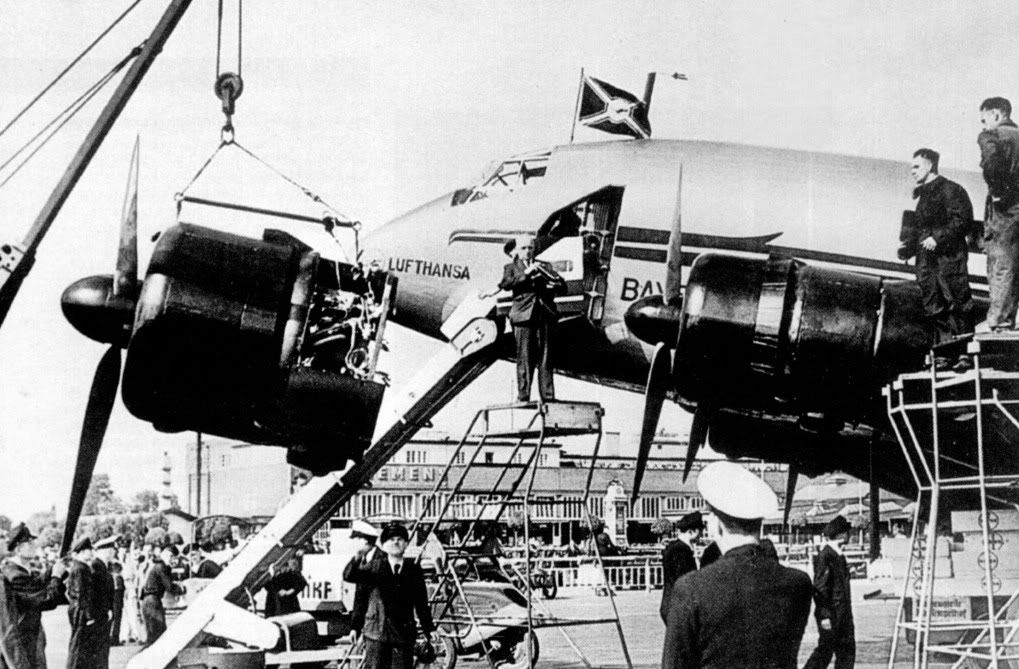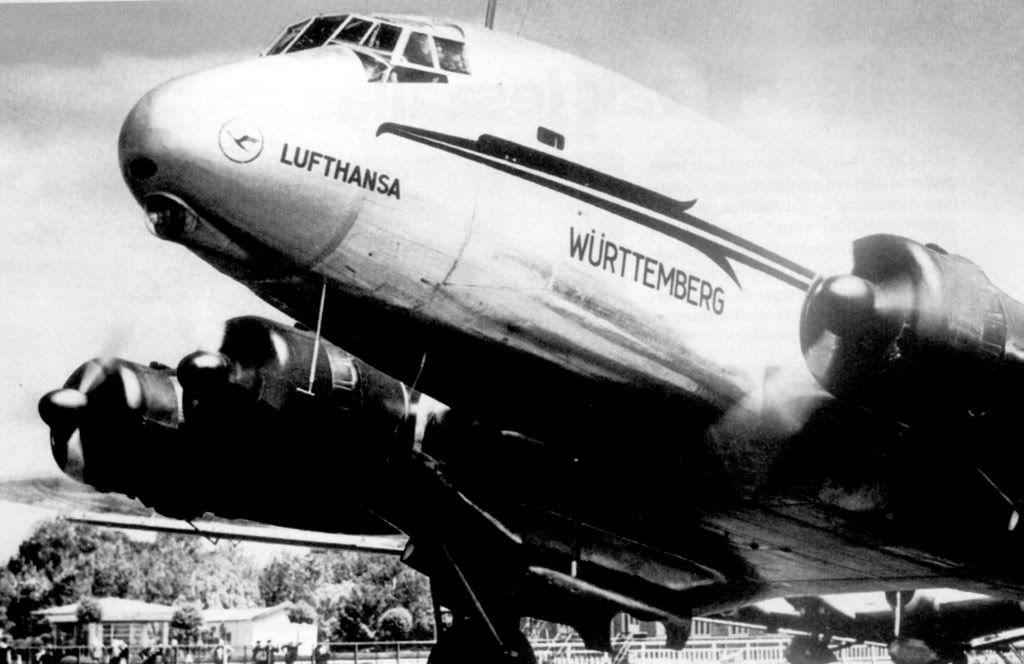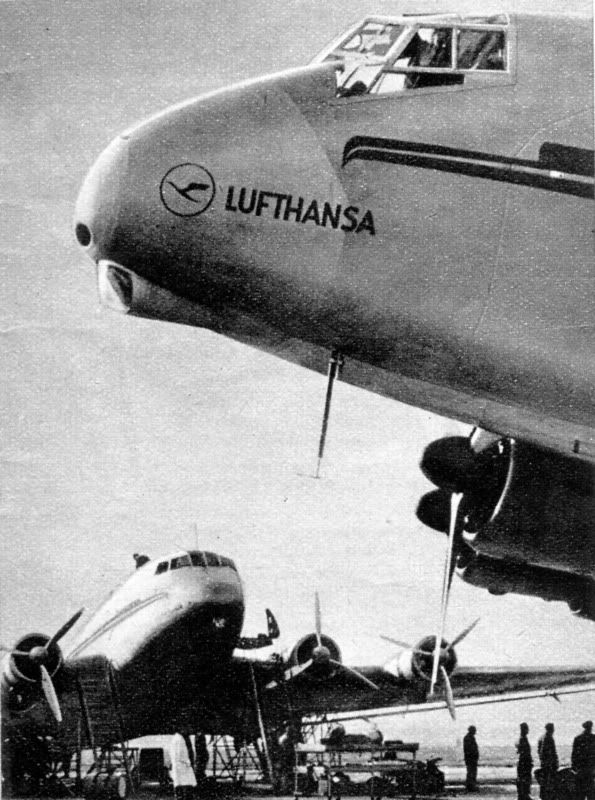awesome! Thanks man, I was just curios. I’ll do my own research, didn’t mean to enslave you there. 
nah. Just havin some fun.
3 more images of the He-177, extracted form “Warpaint series Nº 33”



Why did the Me-323 use French Gnome-Rhone 14N 48/49 engines?
Probably because it was available and did not consume german materials and manpower.
I was thinking maybe they consumed less fuel compared to the german engines.
Panzerknacker! Thank you so much for the pics of the Ju-90/290/390, i saved them on my pc cause i want to building an rc model of it. If you have anymore pics of the it please post
You are welcome.
No more on the Ju-390, but here you got some more of Ju-90.





Edited ( pictues misaligned)
[FONT=Verdana]The Junkers Ju-290 in the transport role, interesting pictures taken in the Pitomnik airfiled, not far away of Stalingrad in winter 1942.[/FONT]
[FONT=Verdana] [/FONT]
[FONT=Verdana] [/FONT]
[/FONT]
[FONT=Verdana] [/FONT]
[FONT=Verdana] [/FONT]
[FONT=Verdana]The aircraft is cover with defensive armament including a MG-151/20 for rear defense. Note also the bulgeous fairing below the cockpit:[/FONT]
[FONT=Verdana]some camera ? an Lofte bombsigth maybe ? not sure.[/FONT]
[FONT=Verdana] [/FONT]
[FONT=Verdana] [/FONT]
[/FONT]
[FONT=Verdana] [/FONT]
[FONT=Verdana] [/FONT]
[FONT=Verdana] [/FONT]
[/FONT]
Well, here are some additional pictures of the Ju 90, honorable ladies and gentlemen.
Although all of them are representing a specific pictorial tribute to the pre-war, civilian Lufthansa times, it has to be emphasized that even in that case this magnificent airplane had an important role in the German war effort.
This sturdy, capacious airplane, was used for a highly important transportation missions in 1940 by the Frachtsonderdienst Wien and Kurierdienst Spanien – a couple of specific half-military subsidiaris of the Deutsche Lufthansa, that sustained till the very end of war.

Junkers Ju 90 – true pride of the Junkers-Werke Dessau
Four machines of this type (D-ADLH, D-ABDG, D-ADFJ and D-AURE) successfully transferred certain critical and extremely rare raw materials like tungsten or zinc, and in each mission up to 3 tons of these exceptionaly rare supplies were transported almost directly to the end users – notorious German metal processing and refining capacities like Degussa, Dürener Metalwerke, Boehler and Osram.
During one of these tours - carried out on July 9th, 1940 - one Italian Fiat G 50 fighter pilot near Udine has made a capital identification mistake in believing that the Ju 90 was a British reconnaissance plane, and consequently he opened fire on it! Hovewer, Ju 90 even though full-loaded, was capable to escape, and to achieve a successful force-landing at Aviano airport.

Berlin – Tempelhof, July 13th, 1938 – complete engine alteration in 25 minutes!
Another almost completely forgotten characteristic of this plane was its ability for a quick engine change. On July 13th, 1938 four qualified Lufthansa technicians have demonstrated for those times almost unbelievable capacity to change an entire module of the huge BMW 132-H1 engine in astonishing 25 minutes!

Junkers Ju 90 - Der große Dessauer
Being one of the very first modern large airplanes of the world, this machine surely will be remembered as an unexploited landmark of the aeronautical history.
In the meantime, as always - all the best! 
Nice pictures but you should edit a little, they are too big.
Thanks Liberian! These pics give me a good reference of the front and side!
After the French defeat Germans captured a certain quantity of assembled Gnome Rhone engines at the factory. So, when it was considered to modify Me 321 heavy glider into an powered aircraft solution was find in captured stocks. Other engine types were already planned to be used in more (for German war machinery) important aircraft types.
Anyway, Me 323 was conidered to be heavily under-powered.
Oh, not at all, my dear Mr. SS Ouche-Vittess – as a modeler I perfectly do know what your real needs are! I hope that these additional pictures will be useful too. 

Loading of an early Ju 90 equipped with the DB engines – Berlin, Tempelhof 1938.

A couple of the Ju 90 machines – Berlin, Tempelhof 1939
Of course, I shall try to find some additional snapshots as well. In the meantime, as always – all the best! 
Thanks again Liberian! You and Panzerknacker are helping me alot. thank!!! 
Oh, the pleasure was mine, my dear Mr. SS Ouche Vittese. 
You know, modeling can be very educational, and you can learn a whole range of new things: History (because models reflect the times they operated in, and vice versa), artistic techniques, how to research, manual skills, engineering, geography…
Modeling also appels to all people, in all walks of life. If you find a group of modelers, you will find lawyers and doctors, engineers, shop keepers, business people, military folks, mechnics, carpenters, artists, athletes and – believe it or not – politicians. Young and old, rich and poor. And that’s thrilling.
As a specific augmentation for your start, here is another snapshot for you. I am sure that you will be able to recognize this beauty. 

Fw 200 Condor – Budaörs, Hungary, 1938.
In the meantime, as always – all the best! 
Wow! I’ve never seen a fw-200 as an airliner.
Ahhh the FW 200 Condor, the flying Zippo lighter!
Hello,
I don’t know if anyone would be interested in this but I’m working on a 1/48 scale conversion for the MPM kit of this aircraft. Let me know if anyone would be interested in purchasing a conversion. It should be available for sale within the next two months. Also, if there are any other versions of the He 177 you’d like to see in model form, please feel free to suggest. Thank you.
Nicholas
